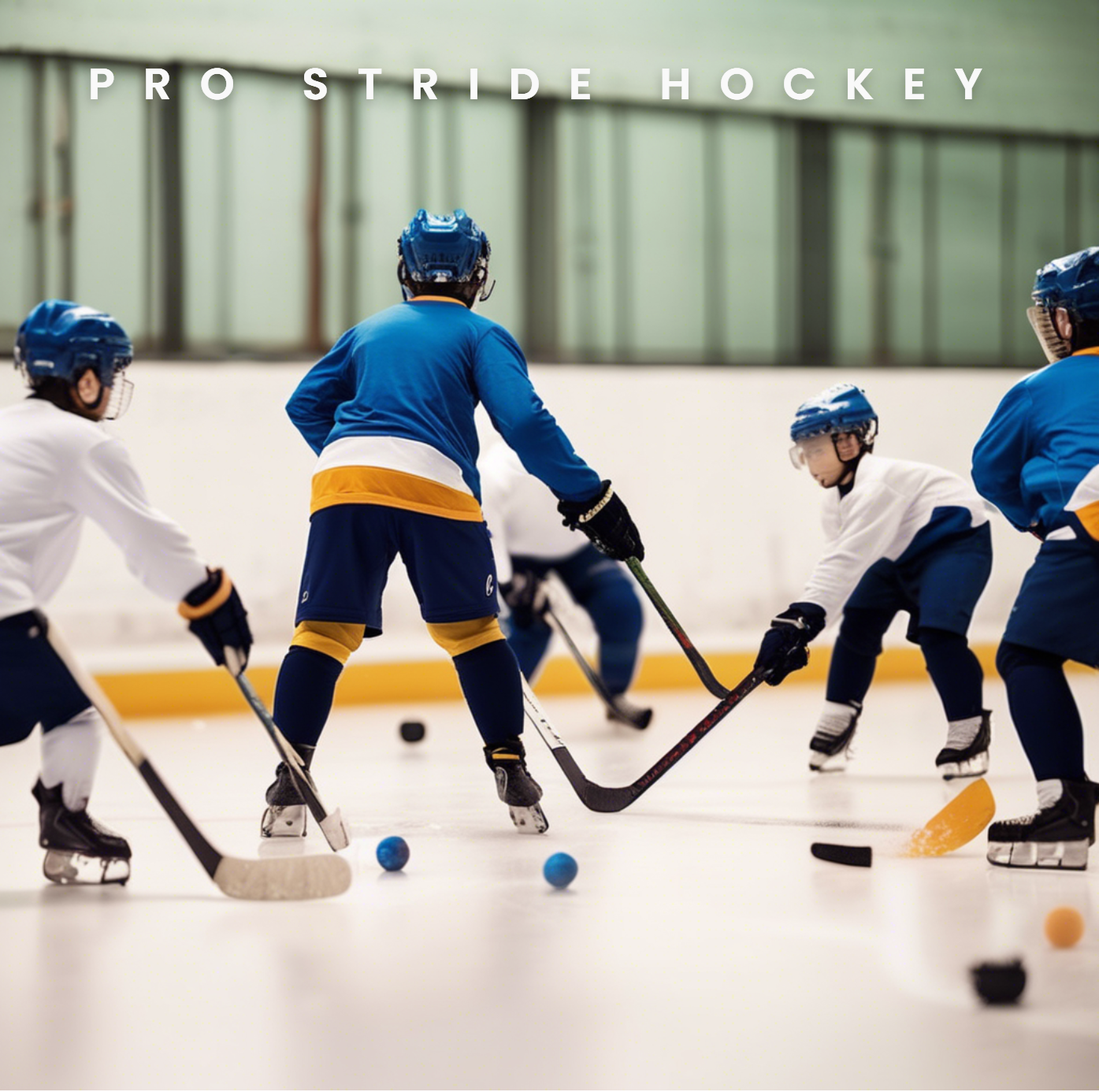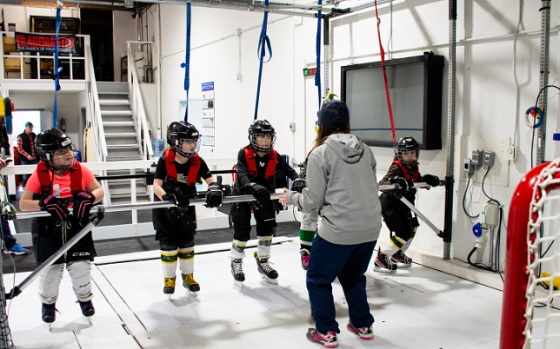
Success in hockey doesn’t happen overnight—it’s the result of discipline, commitment, and a carefully structured approach to development. For athletes at any level, from beginners to professionals, the collective growth of a group often determines how far they can go in competitive environments. That’s why Hockey team training has become one of the most vital aspects of modern player development. It’s not just about skill; it’s about teamwork, communication, conditioning, and building a culture that thrives under pressure.
In this article, we’ll explore why training as a team makes such a big difference, how modern methods have advanced, and the core elements that every team should include in their development program.
The Value of Team-Oriented Development
Individual skill development is important, but hockey is ultimately a team sport. A single player cannot carry a team through an entire season. The coordination between forwards, defensemen, and goaltenders, along with the ability to anticipate each other’s movements, creates opportunities that individual talent alone cannot.
Hockey team training emphasizes collective progress, ensuring that all players grow together. This leads to:
Improved Communication: Players develop a sense of awareness, learning to anticipate plays through verbal and non-verbal signals.
Consistency on the Ice: Teams that train together regularly perform with fewer breakdowns and more cohesion.
Stronger Team Morale: Shared challenges and accomplishments bring players closer, fostering trust.
When every athlete understands their role and can depend on others, performance improves across the board.
Modern Approaches to Training
Hockey has evolved dramatically over the last few decades, and training methods have advanced as well. Coaches now take a holistic approach that addresses physical fitness, technical skills, tactical awareness, and mental conditioning. The result is a well-rounded program that strengthens individuals while uniting them as a team.
Some of the most effective modern strategies include:
Video Analysis and Technology – Reviewing gameplay footage allows teams to identify strengths and weaknesses while simulating real-game scenarios in practice.
Position-Specific Training – Defensemen, forwards, and goalies train differently, but sessions also emphasize how each role integrates into a cohesive strategy.
Strength and Conditioning – Building endurance, agility, and explosive power is crucial for sustaining high performance throughout an intense season.
Mental Skills Development – Training resilience, focus, and composure ensures athletes perform at their peak even in high-pressure playoff games.
By combining these methods, teams achieve more than just skill improvement—they become prepared for the dynamic challenges of competitive hockey.
Core Components of Effective Hockey Team Training
To maximize success, training programs should cover a balance of physical, tactical, and psychological elements. Let’s break down the essentials.

1. Skating and Agility Work
Skating is the foundation of hockey. Without strong skating ability, players struggle to execute even the most basic strategies. Training often includes:
Acceleration drills for explosive starts
Edge work to improve turns and balance
Backward skating for defensemen
Transition drills for quick pivots
Improving agility ensures players maintain control under pressure and adapt to rapid game changes.
2. Stickhandling and Passing
Puck control is central to the game. Players must develop both individual stickhandling ability and quick, accurate passing. Exercises that combine these skills simulate real-game conditions, where decisions must be made in seconds.
Team drills, such as passing sequences or breakout simulations, ensure smooth communication between linemates and reduce turnovers during live play.
3. Shooting and Scoring
Scoring goals requires accuracy, timing, and creativity. Training should emphasize:
Quick-release shooting
One-timers for power-play efficiency
Shooting under pressure from defenders
Rebound awareness
The more players can finish opportunities, the more dangerous the team becomes offensively.
4. Defensive Systems
Strong defensive play prevents opponents from capitalizing on scoring chances. Training focuses on:
Positional awareness
Zone coverage strategies
Shot blocking techniques
Clearing the puck under pressure
Defensive unity is essential for long-term success, especially in playoff situations where every mistake can shift momentum.
5. Conditioning and Strength Training
Hockey is physically demanding, requiring stamina for three intense periods of play. Conditioning routines focus on:
Interval training for endurance
Weightlifting for strength and injury prevention
Flexibility exercises to reduce muscle strain
On-ice conditioning to mirror game intensity
When players are physically prepared, they can maintain peak performance deep into overtime situations.
Building Team Chemistry
Physical skill development is only part of the equation. Chemistry among players often separates good teams from great ones. Shared experiences during hockey team training help athletes learn to trust each other both on and off the ice.
Coaches often design team-building exercises that encourage communication, leadership, and accountability. Whether it’s off-ice bonding activities, leadership workshops, or collaborative drills, these experiences create a stronger, more unified group.
The Role of Coaches and Leaders
A successful team requires guidance from experienced leaders. Coaches play an essential role in:
Designing balanced training schedules
Providing constructive feedback
Encouraging consistent effort and discipline
Instilling resilience and a growth mindset
Beyond coaches, captains and veteran players often take on leadership responsibilities, guiding younger athletes and setting examples for work ethic and dedication.
Adapting to Different Levels of Play
The structure of training programs often depends on the age group and competitive level of the team.
Youth Hockey focuses on fundamentals like skating, passing, and teamwork.
High School and Junior Levels add complexity with advanced systems, physical conditioning, and leadership development.
Collegiate and Professional Programs include advanced tactics, performance analytics, and specialized strength regimens.
Every level requires a tailored approach, but the foundation of teamwork and communication remains consistent.
Why Team Training Outperforms Individual Focus
While individual training has its place, especially for refining specific skills, the benefits of working together outweigh going solo. Teams that prioritize shared sessions enjoy:
Stronger game-day performance due to familiarity with systems
Fewer breakdowns in execution
A united mindset when facing adversity
Enhanced trust and accountability among teammates
This comprehensive growth ensures long-term success for both the individual and the collective group.
As the game continues to evolve, the importance of structured training will only increase. With advancements in sports science, analytics, and coaching techniques, players today have more resources than ever to maximize their potential. Teams that embrace these opportunities will gain an edge in performance and competitiveness.
The future of hockey is bright for those who commit to consistent development. A well-designed training program doesn’t just prepare athletes for the next game—it sets the foundation for an enduring culture of excellence.
Hockey is a sport that thrives on speed, skill, and strategy, but above all, it thrives on unity. By focusing on structured, collaborative development, athletes not only improve individually but also elevate the performance of the entire group. The power of Hockey training lies in its ability to turn a collection of individuals into a cohesive force capable of overcoming any challenge, a principle strongly emphasized by Pro Stride Hockey.





Write a comment ...